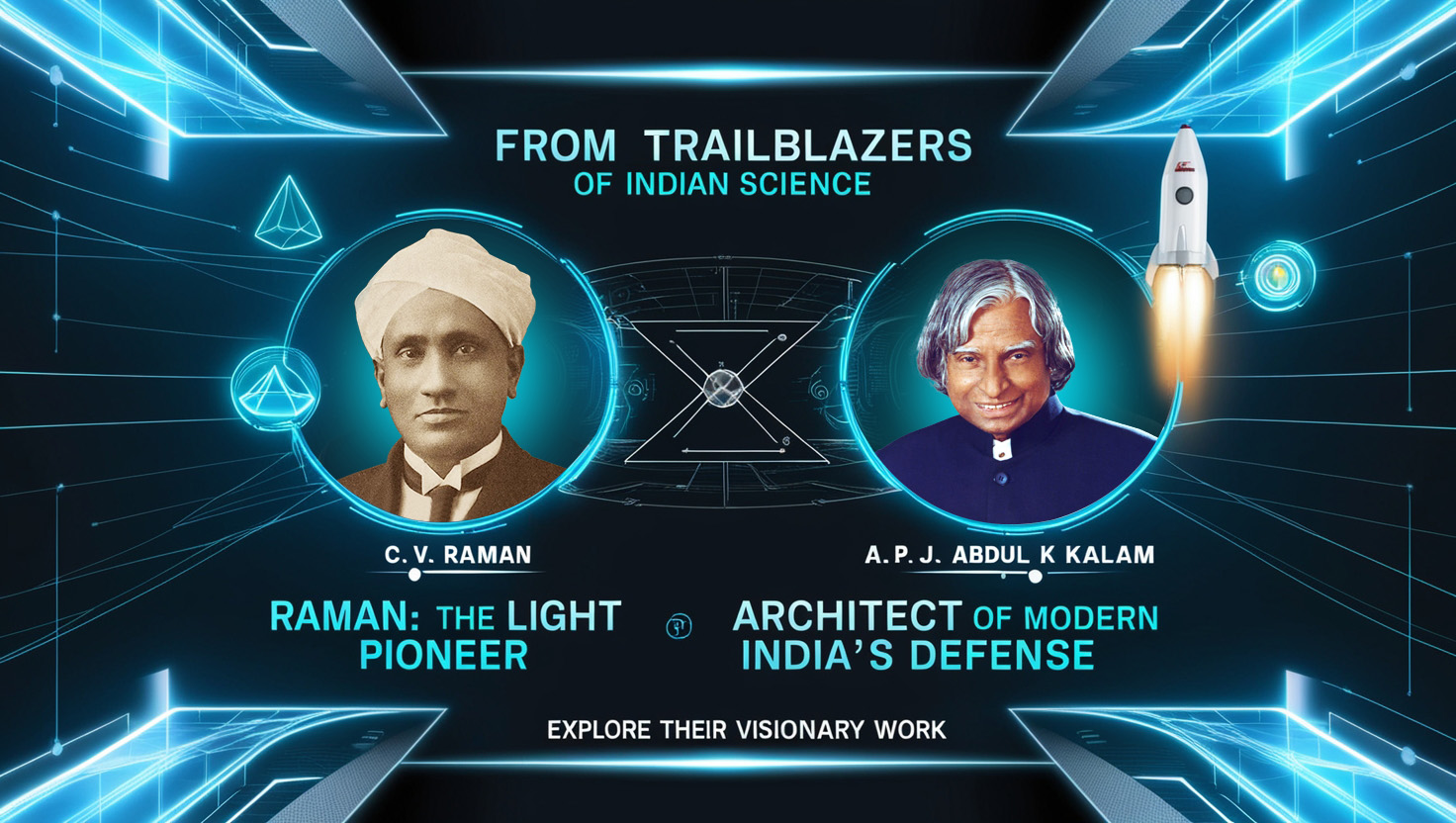Scientists who shaped India’s scientific roadmap
Indian history is replete with instances of our work, achievements and genius in wide areas of science, be it physics, chemistry, astronomy, or biology. There is evidence of scientific innovations and inventions in our mythology and history. Over the past century, many Indian scientists and their inventions have shaped the country and the world. From the earliest instances of surgeries to shlokas that give accurate measures of distance from the sun, the inquiring mind of a scientist has always been at work in the Indian subcontinent. In this blog, we discuss some renowned individuals who are famous Indian scientists and their inventions.
Many remarkable contributions to modern science have originated from India, highlighting the nation’s dedication to fostering innovation and pushing the boundaries of knowledge. Some of the noted Indian scientists who have shaped India’s scientific roadmap and are noted for their revolutionary contributions are.
Dr JC Bose earned renown for inventing the Crescograph which records the million part of a millimetre of plant growth and orbital movement. Using this device he proved that plants have a circulatory system and that the living cells cause the upward movement of sap in plants. The radio invented by Guglielmo Marconi was built upon Bose’s invention, the wireless coherer.
CV Raman was the first Indian and Asian to win the Nobel Prize for Physics in 1930. His notable work was the concept of Raman's Effect, which says that light scatters when it passes through a transparent substance. In his study of broken light, he observed that "there were two spectral lines of very low strength (strength) parallel to the incident monochromatic light." With his hypothesis, he proved that any broken light was not monochromatic even though the incident light was monochromatic. In quantum theory, the Raman Effect proves light’s dual nature and it is made up of particles and waves. Raman spectroscopy is an essential technique in chemistry, biology, and materials science that allows scientists to scrutinise atomic and molecular arrangements in materials.
Dr Homi Bhabha is the “Father of Indian Nuclear Programme”. He was invited by Dr CV Raman to join the Indian Institute of Science, Bangalore as a reader where he soon became a Physics professor. His ambition was to build a research institute for new areas of Physics. With this goal, in 1948, he built India’s first atomic research centre which is named after him - the Bhabha Atomic Research Centre. He was also the brainchild behind the establishment of the Tata Institute of Fundamental Research (TIFR) in 1944.
Dr. Kalam is the “Missile Man of India”. He has done pioneering work in aeronautics, missile technology, and space exploration. Under his leadership at DRDO, the nation’s space capabilities grew. He was the guiding force behind the launch of the Satellite Launch Vehicle (SLV-III) and the Rohini satellite. He worked on India’s ballistic missile development, the Agni and Prithvi missiles that fortified India’s defence capabilities.
Salim Khan is a distinguished ornithologist who is called the “Birdman of India”. He is a big influence on avian research and biodiversity conservation in India and abroad. His research work helped us understand the avian ecosystem and contributed to global bird conservation initiatives.
M Visvesvarya is renowned for his pioneering work in the field of engineering. He invented the Block System which revolutionised water management and agricultural productivity. He was the chief engineer in the construction of the Krishna Raja Sagara Dam in Mysore. He designed the flood protection system for Hyderabad city. His contribution to civil engineering and water management has inspired global sustainable agricultural practices.
Dr Hargobind Khorana is a leading name in the field of medicine. He won the Nobel prize for his contributions to the role of genes in protein synthesis which had a great impact on research in the field of genetics and biotechnology.
Dr. Sarabhai founded the Indian Space Research Organisation (ISRO) in 1969 and laid the foundation for India’s space exploration. Under his aegis, India launched satellites such as Rohini, APPLE, and INSAT that revolutionised communication and meteorology.
There are many noted scientists from India in the IT sector, medical research, space research and more. They are highly accomplished modern scientists who work in India and abroad in premiere research institutes and continue to inspire individuals to pursue science and make their mark in the field.

© Knowledgeum Academy
